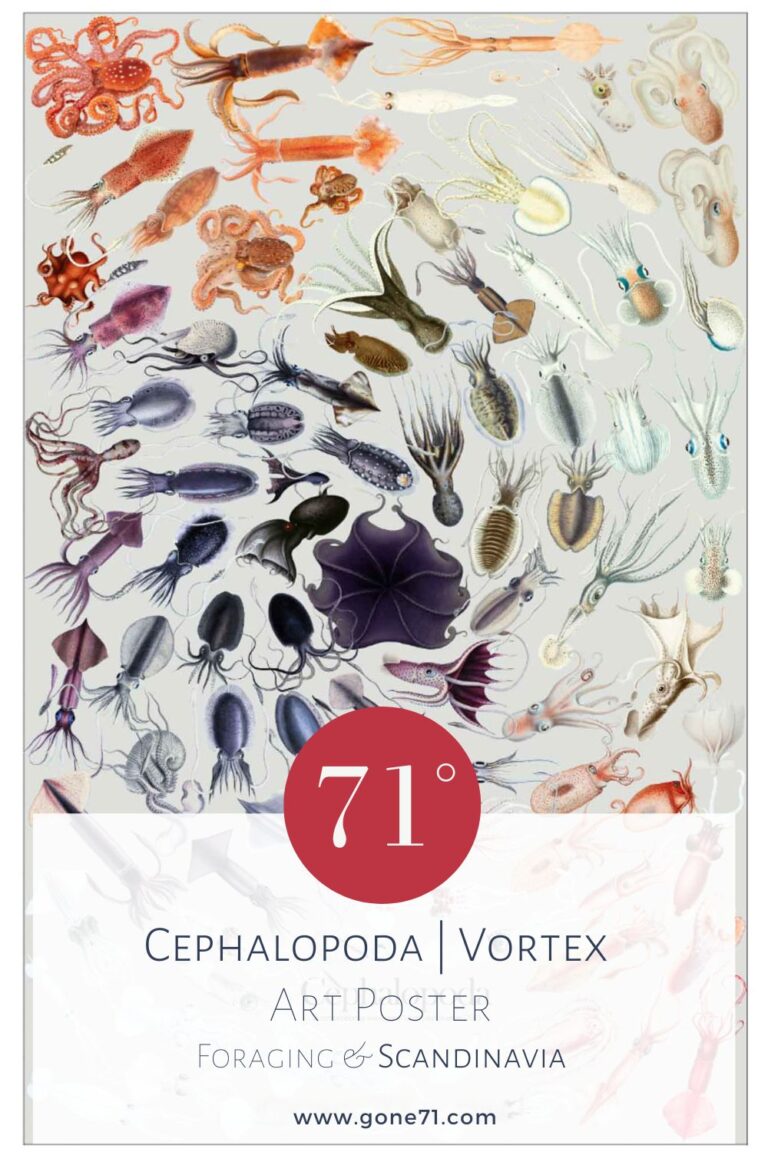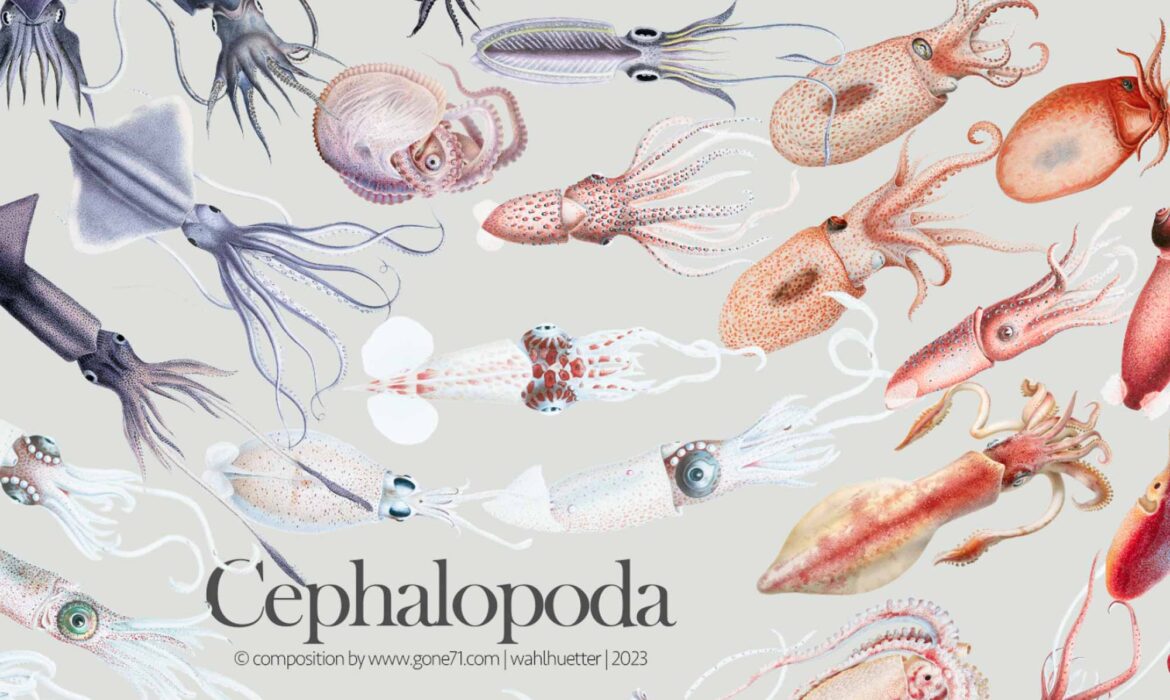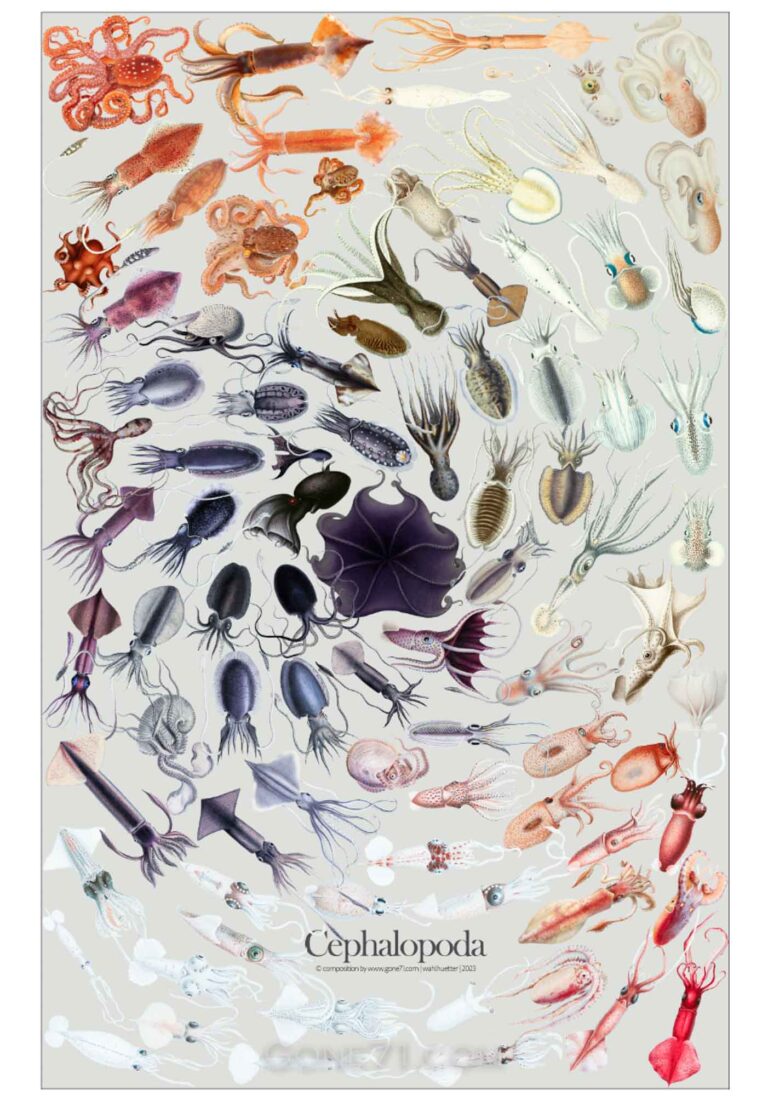Introducing our stunning High Resolution ‘Cephalopoda’ poster, featuring intricate and highly detailed lithographic scientific drawings of cephalopod species rearanged in a new and unique way. This poster is a true masterpiece, showcasing the beauty and complexity of these fascinating marine creatures.

About the ‘Cephalopoda’ poster
The poster is an explosion of color, with each cephalopod species expertly rendered in individual vibrant hues. The lithographic technique used to create the original drawings adds an extra level of depth and texture, making the poster truly come to life. The attention to detail is remarkable, with every tentacle, arm, and eye expertly depicted.
Measuring at A0 size in its full resolution, this poster is sure to make a statement in any room. It is the perfect addition to any home, office, or classroom, and would make an excellent gift for any cephalopod enthusiast. The poster is available as a digital download, so you can print it out as many times as you want.
This poster is not only a beautiful piece of art but also a great educational tool. It is a good way to learn about the different species of cephalopods and their characteristics. It can also be used to spark curiosity and inspire further research on these amazing creatures.
Overall, this poster is a work of art that combines beauty and education in one. It is a must-have for anyone who loves cephalopods, marine life, or simply appreciates high-quality artwork. Order your copy today and experience the magic of cephalopods in a whole new way.
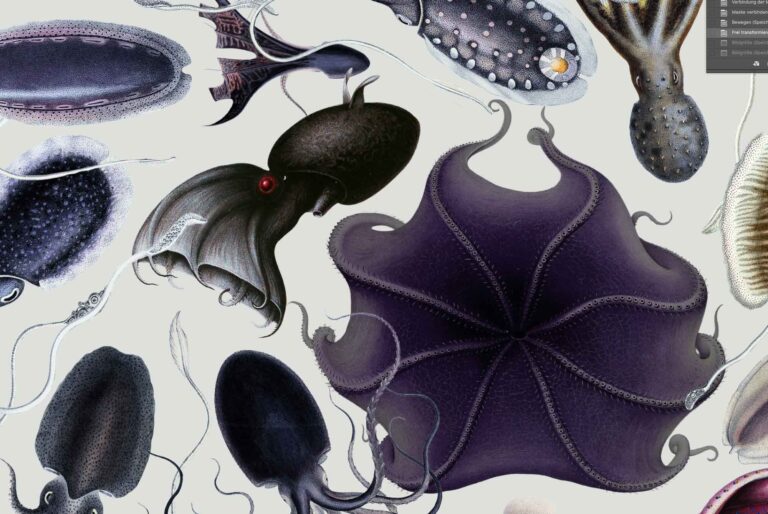
About cephalopods
Cephalopods are a diverse group of marine animals that include species such as octopuses, squids, and cuttlefish. They are known for their unique characteristics, such as their large and complex brains, advanced nervous systems, and the ability to change the color and texture of their skin.
Recent research has shown that cephalopods are actually highly intelligent creatures. Octopuses, for example, have been observed using tools, solving problems, and escaping from enclosures. They also have the ability to learn through trial and error, and have been known to remember solutions to problems for months.
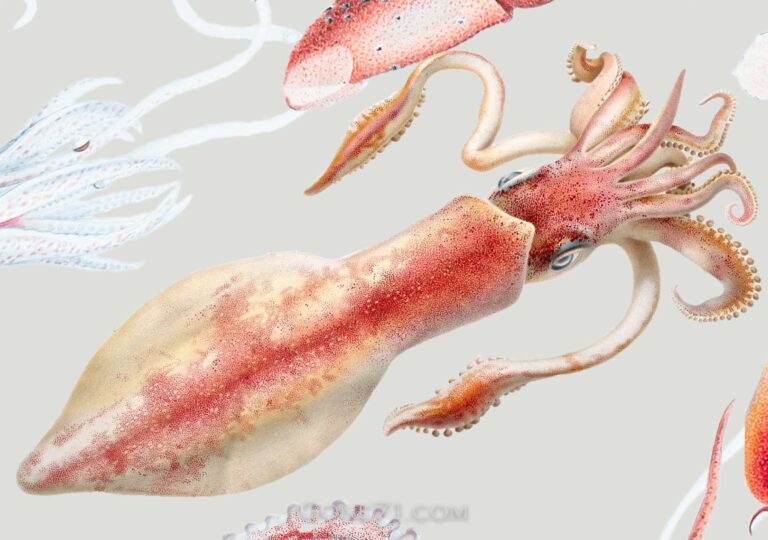
Unique properties of cephalopods
In terms of physical characteristics, cephalopods have a unique body structure that allows them to move quickly and gracefully through the water. They have a cylindrical body, a head with eight or more arms, and two or more tentacles. Their skin is covered with specialized cells called chromatophores, which allow them to change color and texture to blend in with their surroundings.
Cephalopods have a unique reproductive process. Female octopuses, for example, lay eggs and then guard them until they hatch. After hatching, the young octopuses are on their own, and they have to fend for themselves. Some species of cephalopod, such as the giant squids and some species of octopus, have a short lifespan, usually less than five years.
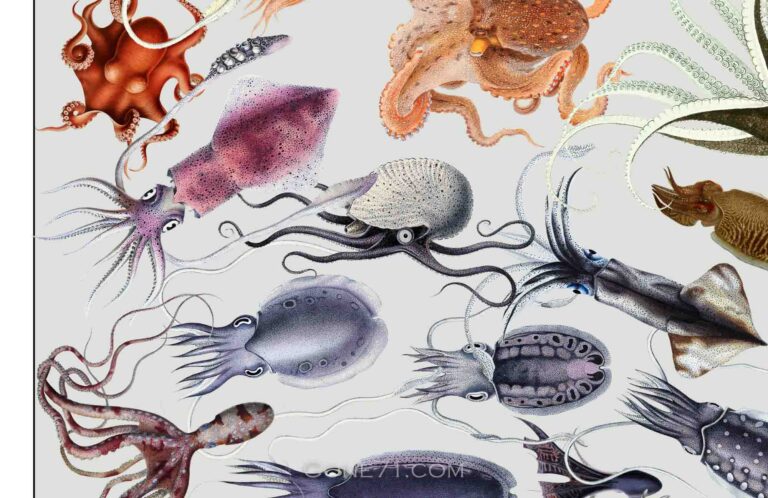
More about cephalopods
Cephalopods are not commonly associated with the cold waters of Scandinavia. However, these intelligent and fascinating creatures can be found in the seas surrounding Denmark, Sweden, Norway, and Finland.
One of the most well-known cephalopods found in Scandinavian waters is the common octopus (Octopus vulgaris). These octopuses can be found in the North Sea, the Baltic Sea, and the Skagerrak and Kattegat straits. They are known to inhabit rocky and sandy bottoms, and can be found at depths of up to 200 meters. Common octopuses are relatively small, with an arm span of up to one meter. They are also known for their ability to change color to blend in with their surroundings, a skill which helps them to evade predators and catch prey.
Another cephalopod found in Scandinavian waters is the European squid (Loligo vulgaris). They are known to inhabit depths of up to 600 meters, and can grow to a length of up to 50 cm. European squids are fast swimmers, and are known for their ability to shoot ink to escape from predators.
In addition to octopuses and squids, cuttlefish can also be found in Scandinavian waters. The European cuttlefish (Sepia officinalis) is found in the North Sea and the Baltic Sea. Cuttlefish are also known for their high intelligence, and are capable of complex problem-solving and learning tasks.
Despite their presence in Scandinavian waters, cephalopods are not commonly seen by the general public due to their elusive nature and deep-sea habitat. However, these creatures are an important part of the marine ecosystem, playing a key role in the food web as both predators and prey. Their presence in the waters surrounding Denmark, Sweden, Norway, and Finland is a reminder of the diversity and complexity of life in our oceans.

“Digital foraging”
Introducing “digital foraging”, my latest project that delves into the vast and untapped world of digital information. With a sheer endless amount of historic images and resources available online, the possibilities are endless. The artwork you see here is a perfect example of what can be achieved through “digital foraging”.
Unfortunately it takes much more than just a quick search to get the results you see here. It takes hours of research, technical know-how and a keen eye to find the right images, in the right resolution, and format. And that’s just the beginning. The real work starts with processing and manipulating the images to create something new and unique.
For me, this is what “digital foraging” is all about. The thrill of the hunt, the excitement of discovery and the satisfaction of creating something new and beautiful from what was once forgotten. It’s also a modern take on the traditional art of foraging, and I can’t wait to see what else can be found in the vast depths of the digital world.
Some original images of cephalopods
The original drawings are often true works of art that deserve their own place on the wall. Meticulously drawn and presented, you can find a large number of such pictures on the Internet. What photos do today was solved back then with meticulously prepared illustrations. Below I would like to give some examples of the original drawings used here.
Historic prints of (Scandinavian) fish
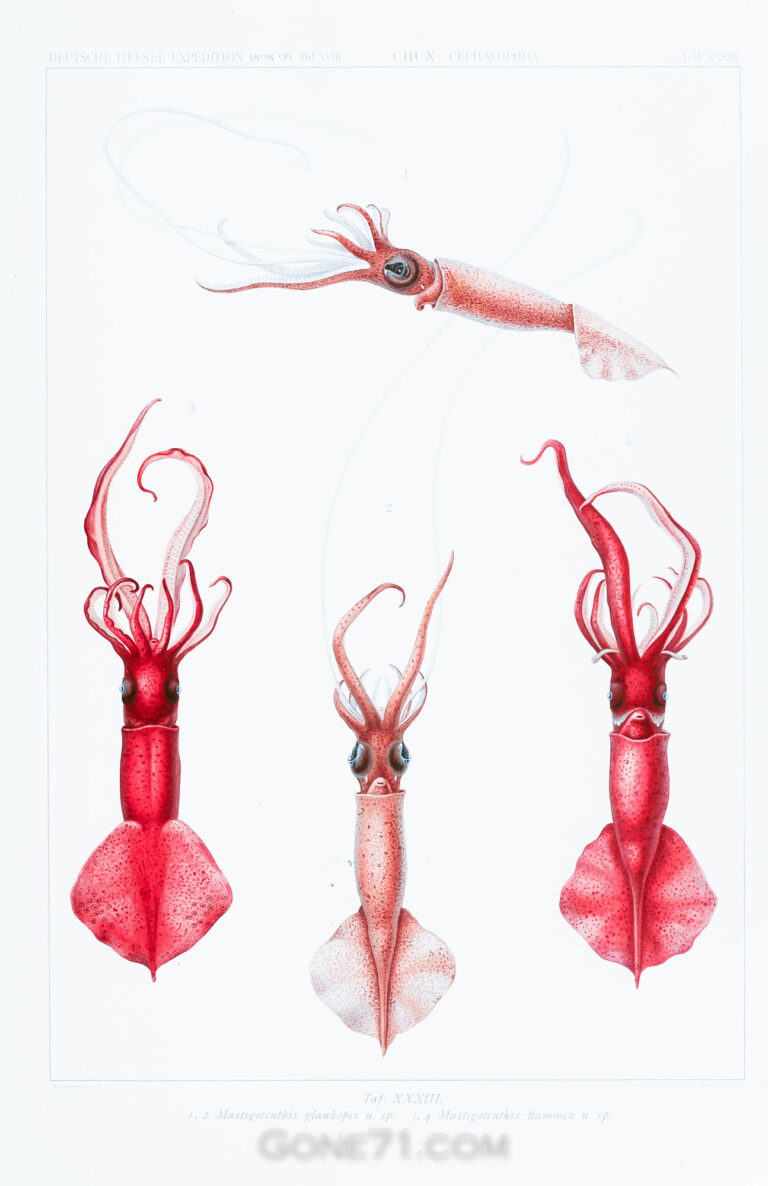
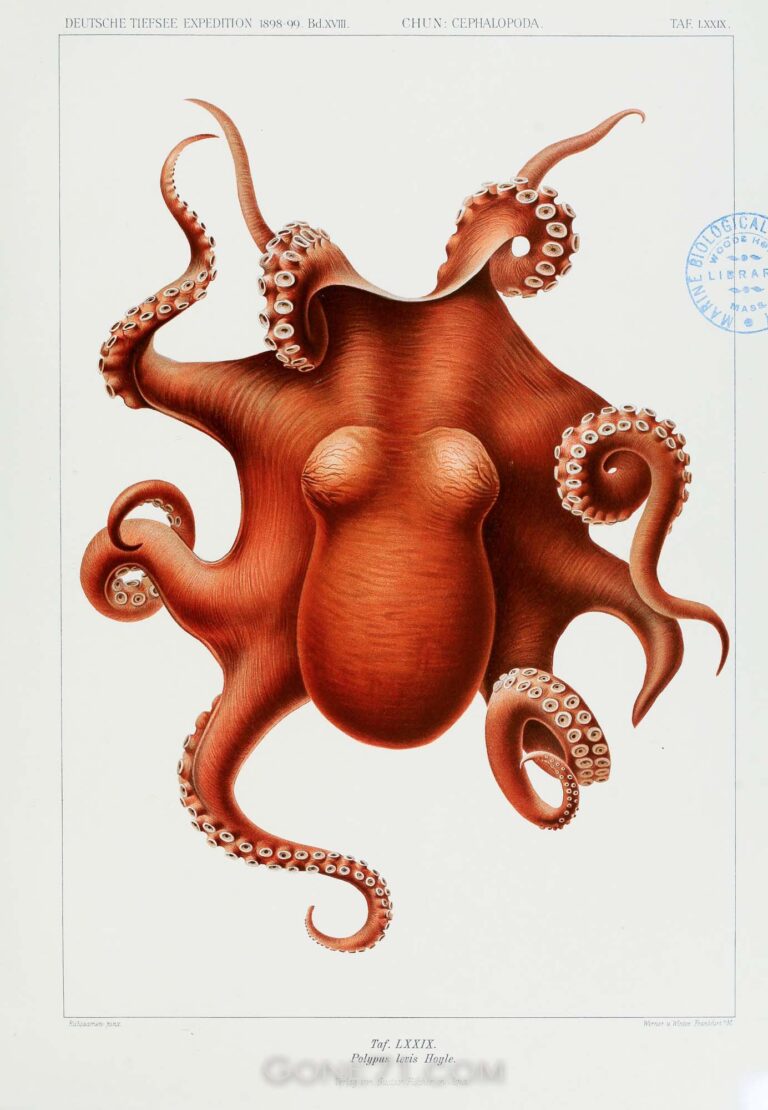
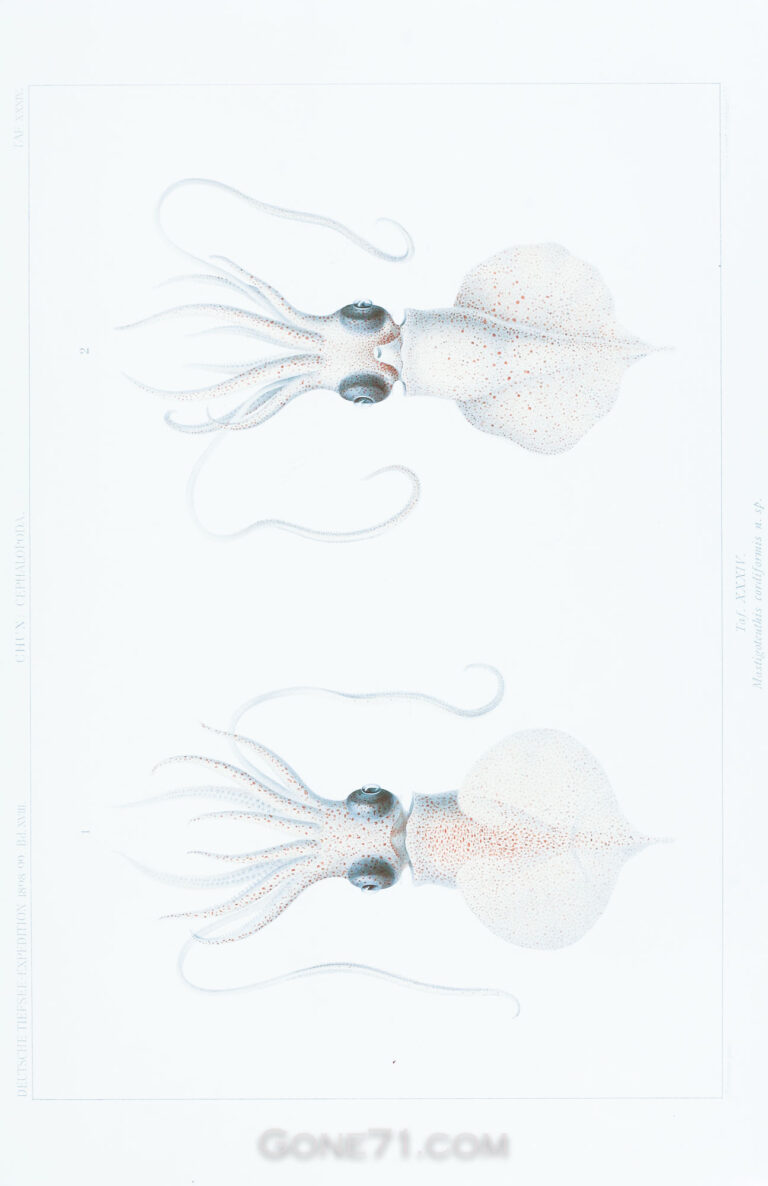

About Lithography
Lithography is a printing process that uses a flat stone or metal plate on which the image areas are worked using a greasy substance so as to repel the ink, while the non-image areas accept it. The process was invented in 1796 by German author and actor Alois Senefelder as a cheap method of publishing theatrical works.
Lithography has been used extensively in the production of scientific illustrations and is particularly well suited for reproducing fine details and subtle variations in tone. The process allows for a high degree of precision and accuracy, making it ideal for reproducing scientific drawings and illustrations.
When it comes to scientific prints, lithography has been used to reproduce illustrations and drawings of plants, animals, and various other organisms. The illustrations are often highly detailed, with great attention paid to capturing the fine details of the subject. In addition to reproducing illustrations, lithography has also been used to create maps, architectural plans and technical drawings.
Lithographic prints are valued for their high quality and accuracy and are often considered works of art in their own right. They are also often used as educational tools to help students learn about different species and their characteristics.
Find some inspiration here
↓↓↓
